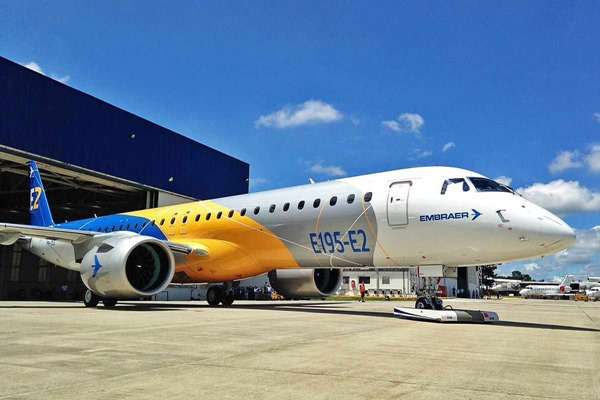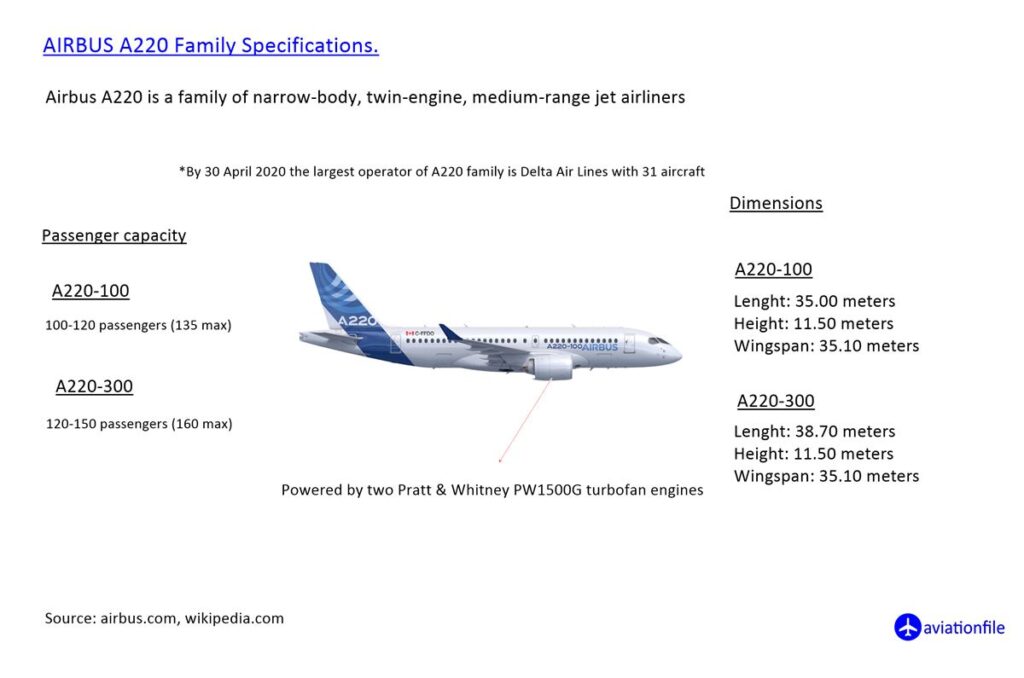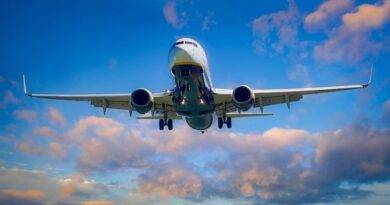Embraer E195-E2 vs. Airbus A220: A Detailed Analysis of Regional Jetliners
As airlines continue to seek efficient, cost-effective, and versatile aircraft for regional and short-haul routes, the competition among jetliners intensifies. Two leading contenders in the regional aircraft segment are the Embraer E195-E2 and the Airbus A220. Both models represent the latest in aviation technology, offering advanced aerodynamics, fuel efficiency, and passenger comfort. However, they cater to slightly different market needs. This article explores the features, specifications, and advantages of each aircraft to help airlines make informed fleet decisions.
Overview of the Embraer E195-E2 and Airbus A220
Embraer E195-E2
Embraer, a Brazilian aircraft manufacturer, introduced the E195-E2 as part of its second-generation E-Jets E2 family. Known for its fuel efficiency and enhanced aerodynamics, the E195-E2 targets regional and short-haul markets and seats 120-146 passengers. This aircraft is Embraer’s largest and most advanced offering in the E-Jets series.
Key Features of the Embraer E195-E2:
- Enhanced fuel efficiency compared to its predecessor
- Advanced avionics and aerodynamic improvements
- Cost-efficient operational capabilities for regional routes

image source
Airbus A220
Originally developed by Bombardier and now part of the Airbus portfolio, the A220 series offers flexibility for both regional and medium-haul operations. The A220 family includes the A220-100 and the larger A220-300, capable of seating 100-150 passengers. With its superior range, the A220 has become a popular choice for airlines looking for a single-aisle aircraft that can efficiently operate on various routes.
Key Features of the Airbus A220:
- High fuel efficiency with a larger range
- Comfortable cabin design with modern amenities
- Excellent payload and range flexibility
| Feature | Embraer E195-E2 | Airbus A220 |
|---|---|---|
| Manufacturer | Embraer | Airbus (originally Bombardier) |
| Launch Year | 2019 | 2016 |
| Seating Capacity | Up to 146 passengers | A220-100: Up to 120; A220-300: Up to 160 |
| Range | 4,815 km (2,600 nautical miles) | 6,297 km (3,400 nautical miles) |
| Engine | Pratt & Whitney PW1900G | Pratt & Whitney PW1500G |
| Fuel Efficiency | ~17% more efficient than E190-E2 | ~20% more efficient than previous generation |
| Noise Reduction | Lower noise footprint than predecessor | Up to 50% noise reduction compared to previous aircraft |
| Market Position | Regional and low-cost carriers | Regional and short-to-medium-haul carriers |
| Key Operators | Azul, KLM Cityhopper, Helvetic Airways | Delta Air Lines, Air Canada, Swiss |
| Unique Features | High wing flexibility, smaller airport suitability | Wide cabin layout, enhanced passenger comfort |
Fuel Efficiency and Environmental Impact
Embraer E195-E2 Fuel Efficiency
The Embraer E195-E2 was designed with fuel economy in mind. Its new Pratt & Whitney GTF (Geared Turbofan) engines provide up to 25% improved fuel efficiency over the older E-Jet models. Additionally, the optimized aerodynamics and lighter materials in the E195-E2 further contribute to its efficient performance. This fuel efficiency translates to lower operating costs, making the E195-E2 ideal for airlines with tight margins.
Airbus A220 Fuel Efficiency
The Airbus A220 also features Pratt & Whitney GTF engines, which enable it to achieve impressive fuel savings. According to Airbus, the A220-300 achieves up to 20% lower fuel burn per seat compared to older models in its class. The A220’s lightweight materials and advanced aerodynamics help reduce fuel consumption, making it a sustainable option for airlines prioritizing lower emissions and operating costs.
Environmental Comparison
Both aircraft significantly reduce CO2 and noise emissions compared to older regional jets, but the E195-E2 is marketed as having lower carbon emissions for regional routes due to its optimized design for shorter flights. The A220, on the other hand, can offer longer-range flights with competitive fuel efficiency, providing airlines with more route options without sacrificing environmental considerations.
Passenger Comfort and Cabin Experience
Embraer E195-E2 Cabin Experience
The E195-E2 offers a spacious 2-2 seating configuration, which eliminates the middle seat, a preferred layout among passengers. Embraer has designed the cabin to maximize comfort, with larger windows, ergonomic seats, and ample overhead bin space. The quieter engines also ensure a comfortable and pleasant in-flight experience, ideal for regional flights where comfort can be a key factor.
Notable Passenger-Friendly Features of the E195-E2:
- 2-2 seat configuration, eliminating middle seats
- Larger windows for better natural light
- Spacious overhead bins and cabin space
Airbus A220 Cabin Experience
The Airbus A220 has a 2-3 seating layout, which allows more flexibility in seating arrangements. The A220 boasts one of the widest economy seats in its class, larger windows, and a spacious cabin that rivals larger single-aisle aircraft. With quieter engines and advanced noise-reduction technology, the A220 offers a comfortable experience, making it suitable for both short and medium-haul flights.
Notable Passenger-Friendly Features of the A220:
- Wider economy seats
- Large windows and open cabin feel
- Flexible seating arrangement with 2-3 configuration

Range and Operational Flexibility
Embraer E195-E2 Range
The E195-E2 has a maximum range of around 2,600 nautical miles, making it suitable for regional and short-haul routes. While this range does not match that of the A220, it is sufficient for many regional and domestic routes, particularly in regions like Europe and Latin America, where distances between destinations are shorter.
Airbus A220 Range
The A220 has a range of up to 3,450 nautical miles (A220-300 variant), making it a more versatile option for airlines that want to operate both regional and medium-haul routes. This extended range opens up new route possibilities, allowing airlines to connect secondary cities over longer distances without requiring a larger aircraft.
Maintenance and Operational Costs
Embraer E195-E2 Maintenance and Costs
Embraer designed the E195-E2 with reduced maintenance in mind, focusing on fewer scheduled maintenance intervals. Lower fuel consumption and efficient engine performance contribute to lower operating costs. For airlines focused on cost-effective solutions for regional routes, the E195-E2 presents a valuable option due to its high reliability and minimal maintenance needs.
Airbus A220 Maintenance and Costs
The Airbus A220 also boasts a low-cost maintenance profile, thanks to its advanced engines and lightweight design. Its efficient fuel consumption reduces operational costs, and Airbus has focused on reliability and ease of maintenance, further enhancing its appeal to cost-conscious airlines. However, its broader range and capacity flexibility may result in slightly higher maintenance costs than the E195-E2.
Market Positioning and Competitive Advantage
Embraer E195-E2 Market Positioning
The Embraer E195-E2 primarily targets regional and short-haul markets, where airlines prioritize efficiency and cost-effectiveness over long-range capabilities. Its fuel economy, spacious 2-2 seating, and reduced environmental impact make it a strong competitor in markets focused on quick turnarounds and regional connectivity.
Strengths of the Embraer E195-E2:
- Cost-effective for regional routes
- Enhanced fuel efficiency for shorter flights
- Ideal for high-frequency, short-haul operations
Airbus A220 Market Positioning
The Airbus A220, with its extended range and flexible capacity, appeals to airlines needing a regional jet that can also serve longer, thin routes. This aircraft allows airlines to expand their route networks and explore less-served destinations, making it ideal for airlines looking to connect secondary cities or open new markets.
Strengths of the Airbus A220:
- Versatile for both regional and medium-haul routes
- Increased range provides more operational flexibility
- Comfort-focused cabin design for longer flights
Conclusion: Choosing Between the Embraer E195-E2 and Airbus A220
The Embraer E195-E2 and Airbus A220 each offer unique benefits that cater to different operational needs. The E195-E2 is optimized for regional routes, offering fuel efficiency, low operational costs, and passenger comfort for shorter flights. The A220, on the other hand, combines regional efficiency with longer-range capabilities, providing airlines with the flexibility to expand into medium-haul routes.
For airlines focused on regional connectivity and lower costs, the Embraer E195-E2 is an excellent choice. Meanwhile, airlines seeking versatility, range, and enhanced passenger comfort over longer distances may find the Airbus A220 better suited to their needs.


